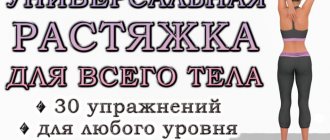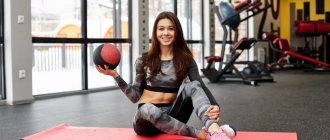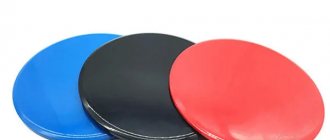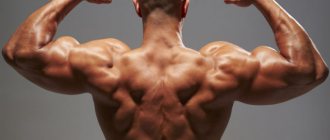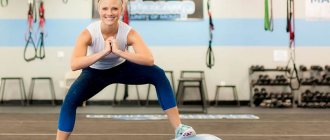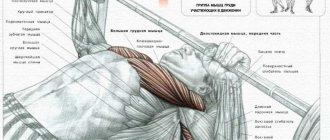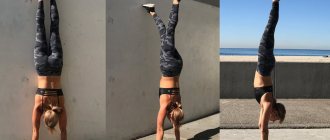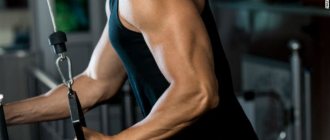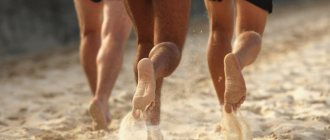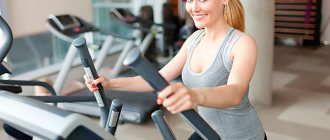© Bojan - stock.adobe.com
Share:
Stretching is the second name for muscle stretching. Recently, there has been a boom in stretching, splits and flexibility schools. Marathons with quite complex exercises are held on social networks, and classes in this format are becoming increasingly popular in fitness clubs. Why? People are a little tired of “iron” sports or simply realized that without flexibility you can’t achieve strength. Stretching itself does not burn fat or build muscle mass, but it is useful for both improving your health and improving athletic performance.
What is stretching?
Stretching is one of the areas of fitness to improve muscle stretching and flexibility. Stretching is a mandatory element of the training of all professional athletes. Often, exercises to develop flexibility and balance are included in exercise therapy complexes and physical rehabilitation programs after injuries and operations.
Features of classic stretching:
» Static. The final position is held for some time, allowing the muscles to adapt to the new state. » Smooth movements. » Work only with your own weight. » A combination of stretching and balance exercises. » Absence of absolute contraindications and age restrictions.
The difference between stretching and other fitness systems
» Stretching is aimed at developing flexibility and balance. » Pilates emphasizes core development and breathing. » Yoga includes asanas, breathing exercises, meditation, as well as psychological and religious practices. » Artistic gymnastics includes various jumps and exercises on apparatus. » Tabata is a high-intensity interval training aimed at burning calories and developing endurance. » Shaping is a rhythmic and dynamic training system aimed at balanced development of the body. The direction includes various elements, including strength exercises and stretching. » Bodyflex emphasizes diaphragmatic breathing rather than exercise. » Callanetics is a static type of gymnastics aimed at working deep muscles. Holding one pose can reach 120 seconds or more.
Main types
» Static stretching. Muscle stretching increases by holding the same position for 30-60 seconds. After adaptation, the muscles relax and the fibers stretch. » Passive stretching. Muscle stretching is achieved through external influence. Exercises are performed with a partner. » Dynamic stretching. Muscle stretching is achieved by slowly or quickly repeating the movement multiple times. » Ballistic stretching. Muscle stretching is achieved through repeated repetition of the movement with a large amplitude. It is considered the most traumatic type of stretching. » Isolated stretching is aimed at stretching individual muscles or even bundles. » Isometric stretching combines tension and relaxation. Relaxation while holding the pose allows you to overcome the “protective reflex” and increase the degree of muscle stretching even more. » Proprioceptive neuromuscular stretching aims to simultaneously improve muscle flexibility and strength. The system involves sequential contraction, retention, relaxation and stretching of the target muscle. Sometimes exercises are added to develop the antagonist muscle.
The benefits of stretching
Stretching exercises allow you to achieve the following goals:
» Slow down aging and loss of strength in muscle tissue » Strengthen bones and prevent fractures » Formation of beautiful proportions and body lines » Accelerate metabolism » Improve muscle tone, endurance and strength » Accelerate tissue recovery after physical activity » Improve flexibility and mobility » Strengthen core muscles » Developing balance and a sense of balance » Improving the elasticity of the buttocks » Prevention of diseases of the genitourinary system » Increasing and maintaining libido » Weight loss » Reducing stress levels » Prevention of depression
Contraindications
Absolute contraindications for stretching are very limited and include the following points:
» Acute infectious diseases » Exacerbation of chronic diseases » Fresh injuries and fractures » Early postoperative period » Acute mental illnesses
Stretching exercises should be performed with caution in the following cases:
» Decompensated conditions » Tendency to thrombosis » Atherosclerosis » Coronary heart disease » Bronchial asthma » Diabetes mellitus » Hernias » Osteoarthrosis » Osteoporosis » Pregnancy and lactation
Effect of exercise
Stretch exercises provide immediate effects on the muscular-ligamentous apparatus and the entire body, that is, they appear either immediately during the workout or upon its completion:
- Stretching causes reactions in the body similar to those that occur during massage and performing exercises aimed at dynamics. This leads to an increase in local temperature in the muscle area and to general warming of the body, to activation of the cardiovascular and respiratory systems;
- Biochemical reactions and metabolic processes in the worked ligaments and muscles are enhanced. This effect is well suited for warming up before main workouts and is used in the treatment of diseases of the muscular-ligamentous system and injuries;
- Improving flexibility normalizes the synthesis of proteins and DNA in tissues, activates the capabilities inherent at the genetic level, which ultimately helps to increase muscle fibers in length, stimulates the processes of regeneration and tissue renewal;
- The appearance of pain during exercise indicates the breakdown of fat cells;
- Consistent relaxation and tension of muscles has a positive effect on the functioning of the nervous system, increasing the body's resistance to psycho-emotional stress.
Stretch exercises should be performed regularly; the severity of the overall effects of training on the body depends on this.
Basic rules for stretching at home
» Before training, there is a warm-up, and after – a cool-down. » Only regular exercise with a gradual increase in load is effective. » You should start with basic exercises, expanding the program over time. » It is advisable to train in special clothing. » During the exercise, there should be no pain, discomfort or sudden jerks. » To maintain water and electrolyte balance, you need to drink water in small sips. » Changing positions is performed while exhaling. » The breathing rhythm should be comfortable, pauses should be avoided. » Training duration – 30-90 minutes.
Clothes, shoes, suit, stretching leggings
Clothing requirements:
» Comfort » Durability » High elongation
Preference should be given to suits made from natural fabrics with a small content of elastane or polyester.
Shoes should be soft and will not interfere with movement. Ballet flats, slippers, soft sneakers or socks with rubberized soles are suitable for stretching.
Cloth
You should exercise both at home and in the gym in specially selected clothes. It should be made of durable and at the same time elastic materials. The trainee should not feel that the clothes are tight, pressing, or making it difficult to move.
It is best to purchase a suitable suit at specialized sales points, where sales consultants can select shorts, leggings, tops, T-shirts, based on the type of expected load, size, and comfort.
Stretching for the back and spine
Sipping
» IP: standing, feet closed. » Clasp your hands in front of you » Raise your arms above your head, palms facing out. » Reach up with your arms and the top of your head.
Video clip
» IP: lying on your back. » Bend your knees and clasp them with your hands. » Pull your knees towards your chest. » Press your chin to your chest.
Cat
» IP: standing on all fours, knees in the projection of the pelvic bones, palms under the shoulders. » Bend back, throwing your head back. » As you exhale, bend into an arch, pulling your stomach towards your spine. Press your chin to your chest.
Actively isolated stretching[edit | edit code]
What it is.
The trick here is to tighten the muscle opposite the one you want to stretch and stretch that muscle for two seconds. The procedure should be repeated 8-12 times, and then move on to the next exercise. Such a large number of repetitions is due to the fact that stretching for two seconds does not cause a sufficient relaxation effect in the muscle (as noted in the section “Why and when to stretch”). You may ask: why strain the muscle opposite to the one being stretched? The fact is that when a muscle tenses, the opposite muscle has no choice but to relax.
Although active-isolated stretching dates back to the 1950s, it has gained popularity only recently. This was mainly due to the enthusiasm of two physiologists, father and son Phil and Jim Wharton, authors of The Wharton's Book of Stretching. Proponents of this stretching are many sports teams and famous athletes, including one of the fastest people in the world, sprinter and Olympic champion Michael Johnson. Researchers have only recently begun to study the active-isolation method, and it may soon be possible to gain a full understanding of it.
Actively isolated stretching has the following advantages.
- It allows you to stretch only one muscle group at a time in isolation. For example, it can be used to stretch the biceps femoris muscle without affecting the lower back and hamstring muscles.
- If you have any muscles that are particularly weak, or if you are rehabbing a muscle after an injury, tension will help strengthen them.
- Many people find active isolation stretching to be less painful than traditional stretching.
This method also has a number of disadvantages.
- Unlike the traditional one, it is more difficult to master, since many of its provisions are much more difficult to accept.
- Active isolated stretching takes more time. To stretch the muscles of the entire body, you will need about twenty minutes, while traditional stretching exercises may take only five to ten minutes.
Example of active-isolated stretching
(Fig. 9). This exercise stretches the calf muscles. Hold the end of a belt or rolled up towel in each hand. Sit on the floor and raise your left leg a few centimeters above the floor. Place your right leg in the most comfortable position for you. Grab your left foot with a belt or towel. Pull your toes away from you, squeezing your calf muscle, and then turn your toes toward you, stretching your calves. Stay in this position for two seconds. Repeat the exercise 8-12 times, and then stretch your right calf muscle.
Stretching for legs
Front thigh stretch
» IP: standing, feet closed. » Bend one leg at the knee and grab your ankle with your hand. » Pull your foot toward your buttock.
Butterfly
» IP: sitting, legs bent at the knees, feet closed. » Pull your feet toward your groin area. » Stretch your knees down. » Apply additional pressure with your palms or grab your feet and lean down.
Fold
» IP: sitting, legs straightened in front of you, feet closed. » Grasp your shins or feet with your hands. » Lean forward, trying to place your stomach on your thighs.
Hamstring stretch
Do these exercises:
- Fold. Sit on the mat with your legs extended forward. Keeping your back straight, bend towards your feet. Hands can be placed on the feet, if stretching allows, or on the shins. If bending forward does not work, you can put your hands back and, creating momentum, stretch forward. You can bend your legs a little. The main condition is not to arch your back, otherwise there will be no effect. It's better to do a very slight tilt.
- The fold can be done from a standing position. Lean forward and lengthen your spine.
There are a huge number of exercises for stretching the leg muscles. Therefore, there is plenty to choose from.
Neck stretching
Forward bends
» IP: standing or sitting. » Tilt your head to the side, trying to reach your shoulder with your ear. » Apply additional pressure using the palm of your hand to the opposite ear.
Head turns
» IP: standing or sitting. » Turn your head to the side. » Hold the position for 30-60 seconds.
Rabbit pose
» IP: sitting on your heels. » Grasp your heels with your hands. » Arch your back and lean forward. » Rest your head on the floor near your knees and press your chin to your chest.
All about stretching[edit | edit code]
At first glance stretching
(or simply stretching) seems to be a very simple and understandable topic. And you might expect that its basic rules can be summarized in one or two sentences, and then immediately move on to specific exercises. From this article you will learn that stretching allows you to maintain freedom of movement and has a beneficial effect on the functioning of your muscles. Its essence comes down not only to stretching individual muscle fibers. We will introduce you in detail to recommendations and new promising trends in this area.
Stretching for hands
Forearm and hand stretches
» IP: standing or sitting. » Extend one arm in front of you. » Lower your hand down and pull it towards you with the fingers of your other hand. » Lift your hand up. Using the fingers of your other hand, pull the fingers of your working hand towards you.
Triceps stretch
» IP: standing or sitting. » Place your hand behind your head and bend it at the elbow. » Use the fingers of your other hand to press on your elbow.
Delt stretching
» IP: standing or sitting. » Stretch your straight arm in the opposite direction. » With the back of your other hand, press on your working elbow, pressing it towards your body.
Recommendations for stretching[edit | edit code]
We offer you simple recommendations that can be applied to all stretching methods.
- Stretching daily or at least three times a week.
You can improve your flexibility in one simple way: practice, practice, and more practice. Over time, your muscles will “remember1” a flexible and elastic state - of course, if you give them a reason for such pleasant memories (through training).
- Stretch after your workout, not before.
Follow this rule whether you do aerobic exercise, lift weights, or both. On days when you do only strength training, spend at least five minutes doing rhythmic, low-intensity aerobic exercise, such as walking, jogging, or using a stationary bike or stepper. Warming up will allow blood to flow through your vessels more actively, raising your body temperature so that your muscles become more receptive to stretching. Never stretch cold muscles. (This rule does not apply to active isolation stretching (described later in this chapter), which can be made part of a warm-up.)
- Never use force when stretching.
Stretch until you begin to experience barely perceptible discomfort, but no more. Never stretch to the point of screaming “Oh, that hurt!” There is no optimal standard for flexibility, so stretch according to your own capabilities.
- Don't forget about breathing.
Deep, natural breathing increases flexibility by helping you relax and sending oxygenated blood to your muscles. Take a deep breath before you begin stretching. Having taken the required position, exhale through your mouth. While holding the muscle in a stretched position, breathe deeply and freely.
- Don’t treat stretching too superficially, declaring to everyone: “I stretch so much that it’s scary to even imagine.”
Concentrate.
Do you feel flexibility in the muscles you are stretching? Are you in the correct position during exercise? Maybe you need to slow down the pace or strain the muscle a little more? Don't torture yourself - stretching should be a relaxing and enjoyable experience.
- Start by stretching those muscles that work the most for you, both during training and in everyday life.
But don't neglect any major muscle group. For example, cyclists should do more stretching in their thighs, calves, and lower back, but they shouldn't forget to do upper-torso stretches. You probably want to have such a flexible body that you can easily lean across the bed and snatch the TV remote control from your other half's hands. (Why is she (or he) watching the third rerun of a cooking show when football is on another channel?)
Interesting questions
Is it possible to do stretching during pregnancy?
Stretching exercises during pregnancy are allowed. Many fitness schools offer special complexes for pregnant women. During stretching, expectant mothers are advised to adhere to the following recommendations:
» Work only with your own weight. » Hold the pose for no more than 10 seconds. » Elimination of jerks, hesitations and sudden changes in body position. » Avoid abdominal exercises.
You should refrain from stretching in the following conditions:
» General malaise » Threat of miscarriage or premature birth » Weakness of the cervix » Placenta previa » Pain in the lower abdomen » Bleeding
Stretching: how many calories are burned?
One hour-long stretching session burns from 60 to 150 calories.
Stretching: how often to do it
Only regular stretching training will help develop flexibility and balance, improve muscle and skin tone. Beginners are recommended to start with 2-3 workouts per week for 30-45 minutes. Over time, the number of workouts can be increased to 6 per week, and the duration - up to 90 minutes.
TOP 10 rules for doing classes
In order for the exercises to give maximum results, you must follow the following recommendations:
- Choose the right type of stretching. Better passive or static.
- Start gymnastics with the simplest exercises.
- Do not make exercise painful.
- Attend classes at least three times a week.
- Warm up your muscles before stretching.
- Monitor proper breathing.
- Start training with an experienced trainer.
- Perform tasks in appropriate clothing.
- Drink enough fluids.
- To live an active lifestyle.
Stretching: results before and after (photos)
Stretching for hernia
Stretching for intervertebral hernia is not prohibited, but a set of exercises must be agreed upon and selected by a rehabilitation specialist.
Ventral and femoral hernias are a contraindication for sports in general.
Stretching for varicose veins
In the initial stages of varicose veins, stretching helps to increase the tone of muscles and veins. As a result of playing sports, the condition of blood vessels can significantly improve. For moderate or severe varicose veins, it is best to consult a doctor.
Fitness elastic band
A fitness band or elastic band, due to the ductility of the material (usually latex), allows you to work out your muscles well. Used for physical rehabilitation, stretching, increases muscle strength and endurance. What are the benefits of stretching with a fitness band:
- The risk of injury is minimal due to the low impact on joints and ligaments.
- Due to its small size, you can take it anywhere: on a trip, for a walk.
- Perfect for practicing at home.
- For a small price you can get complete sports equipment.
- Using a fitness band, you can increase the range of motion when stretching and engage additional muscles.
- Helps diversify your workout.
- There are hundreds of exercises with a fitness band.
Stretching for scoliosis
Stretching for scoliosis is allowed. A set of exercises has been developed that help correct the position of the spine and reduce the severity of pain.
Stretching for lumbar osteochondrosis
In the initial stages of the disease, stretching helps prevent complications and strengthen the back corset. For moderate osteochodrosis, it is recommended to avoid twisting and turning. In case of serious illness, a set of exercises should be selected by a rehabilitologist and exercise therapy instructor.
Stretching during menstruation
Stretching during menstruation is not prohibited. It is recommended to refrain from training if you have severe pain or general malaise. And you should also exclude all exercises with lifting the legs and pelvis.
Stretching after 40
Stretching is highly recommended for middle-aged people. Exercise helps improve your physical and mental health. Stretching reduces the likelihood of developing bone, blood pressure, and back problems.
Stretching for the elderly
Special stretching complexes have been developed for the elderly, which take into account their level of physical fitness, general health and body reserves. In old age, regular stretching reduces the rate of tissue aging, improves mobility and prevents hip fracture.
Stretching for teenagers
Stretching in adolescence helps improve flexibility, prolongs youth and improves overall well-being. Stretching improves strength and endurance, accelerates the growth and regeneration of muscle fibers after strength training.
How quickly will you become flexible?
This depends on many factors: genetics, degree of muscle development, general physical fitness. But in any case, after 2-3 weeks you will definitely notice the wonderful effect of stretching on your body. It will become lighter, more mobile, and the heaviness in the back, shoulders, neck, and legs will disappear. You will notice a noticeable increase in stamina and energy.
If you have long dreamed of doing the splits, then you need to know that this activity requires great care and perseverance. With regular and persistent training, you will be able to do the splits in 2-4 months, if you have never stretched before.
Warm-up
Before stretching, the following exercises are usually performed to warm up and prepare the muscles:
- running in fresh air or on a gymnastic track for 15 minutes;
- exercises on an elliptical trainer (10 min);
- vigorous squats with a barbell behind your shoulders (2 sets of 15 repetitions);
- rotation of the torso with a gymnastic stick behind the shoulders (40 sec);
- hyperextension (12 lifts without weight);
- alternate bends forward and to each leg with freezing for 5 seconds in the lower position (1-2 minutes);
- swings of the upper limbs, possibly with 1 kg dumbbells (40 sec);
- forward lunges with accelerated amplitude (40 sec);
- rapid rotational movements of the feet (30 sec);
- jumping rope (2-3 min).

